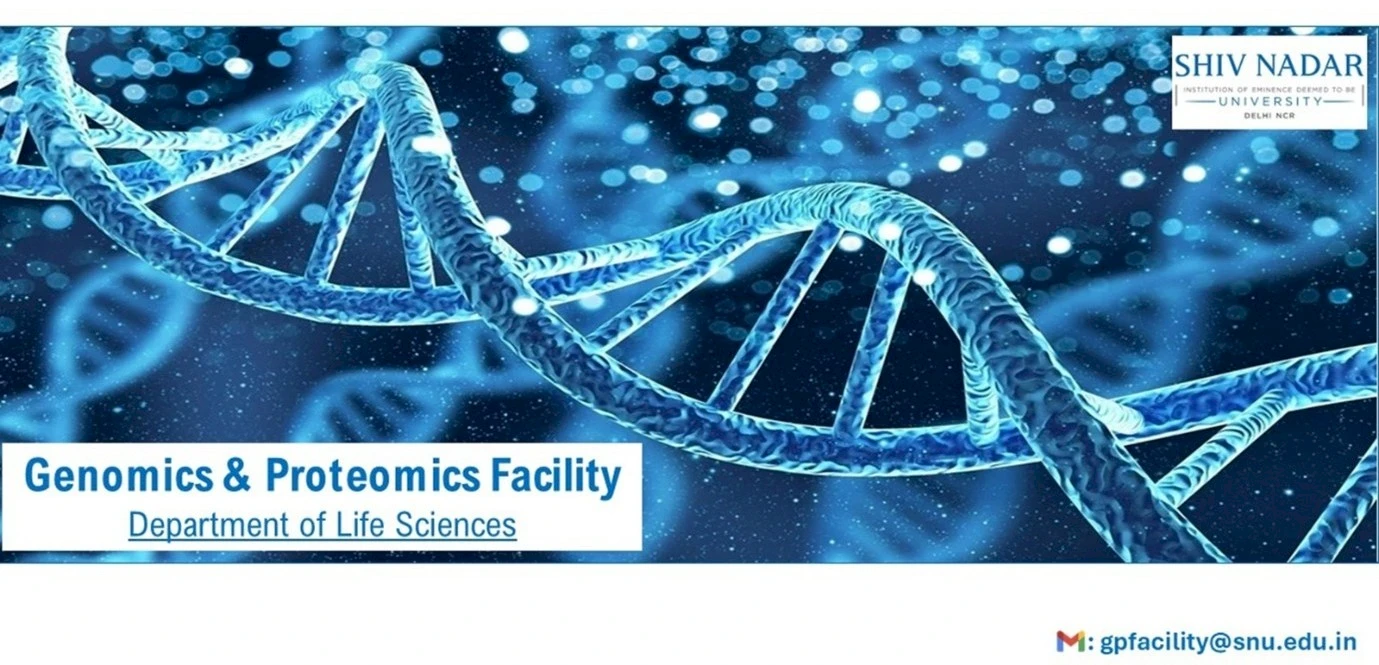Genomics and Proteomics Facility
Genomics and Proteomics Facility
The Genomics and Proteomics Facility (GPF) at Shiv Nadar IoE is a premier research platform designed to enable cutting-edge molecular biology, genomics, and proteomics investigations. Located within the Department of Life Sciences, the facility is equipped with advanced instrumentation for high-throughput sequencing, quantitative PCR, mass spectrometry, protein characterization, and bioinformatics analysis. GPF supports a wide range of interdisciplinary research across genetics, molecular biology, biotechnology, microbiology, and systems biology.
Our goal is to accelerate discoveries by providing comprehensive solutions for nucleic acid and protein analysis. By offering integrated workflows from sample preparation to data analysis, the facility empowers researchers to explore complex biological processes at the molecular level.
We welcome academic institutions, industry partners, and research organizations to collaborate and utilize our infrastructure for innovative scientific pursuits.
Vision
Our vision is to establish the Genomics and Proteomics Facility as a nationally and globally recognized centre for excellence in molecular research. We aspire to become a catalyst for innovation in life sciences by integrating advanced technologies with high-impact biological research. Through strategic partnerships, cutting-edge capabilities, and continuous learning, we aim to contribute significantly to scientific advancement and societal well-being.
Mission
- To deliver world-class genomics and proteomics services that support high-quality, reproducible research across diverse biological disciplines.
- To foster interdisciplinary collaborations, bridging gaps between biology, computation, and translational science.
- To continuously upgrade our infrastructure, ensuring access to state-of-the-art platforms for sequencing, proteomic profiling, and data analytics.
- To train and mentor the next generation of researchers in genomics and proteomics technologies, enhancing their ability to conduct innovative research.
- To serve as a regional and national resource by partnering with academic institutions, hospitals, and industries to address critical scientific and health-related challenges.
Services:
- Sample Preparation
Efficient processing of biological samples using homogenization, centrifugation, quantification, and quality control instruments.
- PCR and Amplification
Conventional and real-time PCR (qPCR) systems for gene amplification, expression analysis, and detection.
- Next-Generation Sequencing (NGS) and Genomics
High-throughput sequencing using MGI and Oxford Nanopore platforms for diverse genomic applications including whole genome, transcriptome, and targeted sequencing.
- Bioinformatics and Data Analysis
End-to-end support for data preprocessing, analysis pipelines, interpretation, and visualization tailored to genomic and proteomic studies.
- Protein Separation and Characterization
Protein extraction, purification, and characterization using FPLC and other biochemical tools.
- High-Throughput Proteomics
Advanced proteomic profiling and mass spectrometry (LC-MS/MS) services for quantitative and qualitative analysis of complex biological samples.
Available Instruments:
- Sample Preparation
Efficient and high-quality sample preparation is critical for all downstream molecular applications. Our facility is equipped with:
Sonicator / Tissue Homogenizer
- Probe Sonicator – Qsonica Ultrasonic
Specifications: Qsonica Probe Sonicator is Suitable for 0.2–500 mL samples.
Applications: Lysis of microbial, mammalian, and plant cells for nucleic acid and protein extraction,
Homogenization of complex biological and chemical mixture.
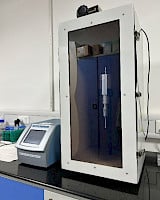
2. PIXUL Sonicator – Active Motif
Specifications: Processes 96-well plates with 5–50 µL per well. It features integrated cooling and
completes shearing in under 10 minutes per plates.
Applications: Plate-based sonication system designed for rapid and reproducible chromatin
shearing and cell lysis. It supports simultaneous processing of up to 96 samples, making
it ideal for epigenetics, genomics, and transcriptomics workflows.
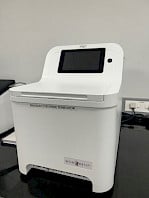
Microcentrifuge
1. Eppendorf Centrifuge 5425
Specifications: Capacity Up to 24 × 1.5/2.0 mL tubes, Maximum Speed up to 15,000 rpm.
Applications: DNA, RNA, and protein isolation, Cell lysate clarification, Spin-column purification kits,
PCR sample preparation.

2. Eppendorf Centrifuge 5810 R
Specifications: Capacity Up to 4 × 400 mL or 16 × 50 mL / 48 × 15 mL conical tubes, Max Speed
Up to 14,000 rpm with fixed-angle rotor and Temperature Range from -9 °C to +40 °C.
Applications: High-throughput DNA, RNA, and protein extraction, Tissue homogenate clarification.
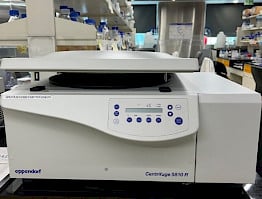
High-Speed Centrifuge
1. Beckman Coulter Avanti JXN-26 High-Speed Centrifuge
Specifications: Maximum Speed Up to 26,000 RPM, Maximum Capacity Up to 4 liters (swinging bucket rotor),
Refrigeration Range from -10 °C to +40 °C.
Applications: Enables high-speed separations in larger tubes, Ideal for pelleting organelles
and density gradient centrifugation.

2. Beckman Coulter Optima XPN-100 Ultracentrifuge
Specifications: Maximum Speed up to 100,000 RPM, Capacity compatible with a wide range of rotors including
swinging-bucket and fixed-angle types, Refrigeration Range from 0 °C to 40 °C.
Applications: Separation of subcellular organelles (nuclei, mitochondria, microsomes, lysosomes), isolation and
purification of nucleic acids and proteins, virus concentration and purification, lipoprotein fractionation,
density gradient ultracentrifugation.
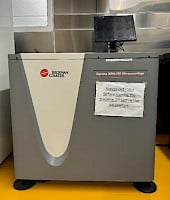
Spectrophotometer (NanoDrop) Implen NanoPhotometer N120
Specifications:
- Measurement Range:
- Nucleic Acids: 2–16,500 ng/μL (dsDNA)
- Proteins: 0.03–400 mg/mL (BSA equivalent)
- Sample Volume: 0.3 to 2.0 µL
- Wavelength Range: 200–900 nm
Applications: Quantification of nucleic acids (DNA, RNA, oligonucleotides), Protein concentration measurements
(A280, Bradford, BCA, etc.), Quality assessment of samples (260/280 and 260/230 ratios)
Fluorometer (Qubit) – For precise quantification using fluorescence-based detection.
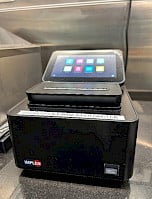
Qubit Flex Fluorometer
Specifications:
- Quantification Range:
- dsDNA: 10 pg/µL to 1,000 ng/µL
- RNA: 250 pg/µL to 1,000 ng/µL
- Protein: 0.25 µg/mL to 5 mg/mL
- Assay Volume: 200 µL per sample
- Sample Format: Qubit Flex 8-tube strips
Applications: Quantifies nucleic acids and proteins using fluorescent dyes. High sensitivity for low-concentration
samples. Greater accuracy than spectrophotometers.
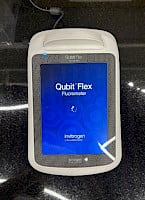
Agilent 4150 TapeStation System
Specifications:
- Compatible Sample Types: Genomic DNA, RNA (total, mRNA), NGS libraries, PCR amplicons
- Sample Input: 1–2 µL per well
- Throughput: Up to 16 samples per run
- Quantification Range:
- DNA: 5–500 ng/µL
- RNA: 50–5000 pg/µL
- Data Output: DNA Integrity Number (DIN), RNA Integrity Number equivalent (RINe), concentration, and fragment size distribution
Applications: Analyzes DNA/RNA quality via chip-based electrophoresis. Provides size distribution and RNA/DNA integrity.
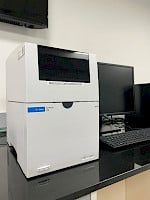
VICTOR Nivo Multimode Plate Reader
Specifications:
- Detection Modes:
- Absorbance
- Fluorescence Intensity (FI)
- Time-Resolved Fluorescence (TRF)
- Luminescence
- AlphaScreen / AlphaLISA (optional)
- Wavelength Range:
- Absorbance: 230–1000 nm
- Fluorescence: 320–850 nm
- Microplate Formats Supported: 6- to 384-well plates
Applications: High-throughput analysis of absorbance, fluorescence, luminescence. Ideal for enzyme, viability, and expression assays.
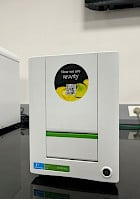
ii. PCR and Gel Documentation
We support both qualitative and quantitative nucleic acid analysis:
- Thermocycler (PCR Machine) – Standard PCR amplification for DNA/RNA studies.
Eppendorf Mastercycler X50s
Specifications:
- Block Format: 96-well standard block
- Temperature Range: 4 °C to 99 °C
- Block Uniformity: ±0.15 °C
- Heating Rate: Up to 5 °C/s
- Cooling Rate: Up to 4 °C/s
- Lid Temperature: Adjustable heated lid (up to 110 °C)
Applications: High-fidelity PCR for gene expression and molecular cloning, Real-time PCR preparation, Site-directed mutagenesis, Amplification of DNA/RNA for downstream NGS workflows, Zebrafish and other model organism PCR workflows (e.g., GXL PCR protocols)
2. Real-Time PCR (qPCR) System: For quantitative gene expression and detection studies.
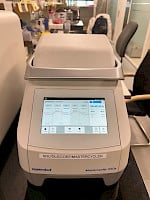
QuantStudio 5 Real-Time PCR System (384-well Format)
Specifications:
- Block Format: 384-well optical plate
- Detection Method: LED-based optical system with 6 decoupled channels
- Temperature Range: 4 °C to 100 °C
- Ramp Rate: Up to 3.0 °C/s
Software Integration: Compatible with Design & Analysis Software and QuantStudio Cloud.
Applications: Gene expression analysis, MicroRNA and non-coding RNA quantification, Pathogen detection and viral load quantification, Real-time detection and quantification of nucleic acids in high-throughput formats.
3.Electrophoresis System: For size-based separation of nucleic acids and proteins.
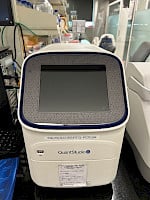
Bio-Rad Mini-Sub Cell GT Electrophoresis System with PowerPac Basic
System Components:
- Power Supply: Bio-Rad PowerPac Basic
- Electrophoresis Tanks: Mini-Sub Cell GT Gel Electrophoresis Units (with safety lids and interlock connections)
- Electrodes and Cables: Integrated safety plugs and leads
Specifications:
- Voltage Range: 10–300 V (adjustable)
- Gel Tray Size: Suitable for mini gels (~7 × 10 cm)
- Buffer Volume Capacity: Approx. 650–1,000 mL
Applications: Separates DNA/RNA (horizontal) or proteins (vertical), Gel documentation and imaging (post-electrophoresis).
4.Gel Documentation System: For high-resolution imaging of agarose and polyacrylamide gels.
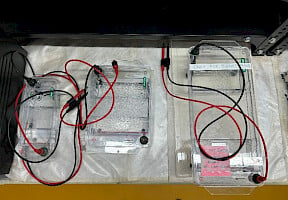
iBright 1500 Gel Documentation System
Specifications:
- Imaging Type: High-resolution digital imaging for gels, blots, and slides
- Lighting Options: Integrated white light and UV/blue light transilluminators
- Detection Methods: Fluorescence, chemiluminescence, colorimetric
- Resolution: Up to 6 megapixels (or model-specific)
Software Integration: Compatible with iBright Imaging Suite for quantitative and qualitative analysis.
Applications: DNA/RNA gel documentation (EtBr, SYBR Safe, etc.), Protein gel imaging (Coomassie, silver stain), Western blot imaging (colorimetric and chemiluminescent detection), Colony counting and fluorescent imaging (optional modules).
III. Next-Generation Sequencing (NGS) and Genomics
- MGI DNBSEQ-G400
MGI DNBSEQ-G400, a cutting-edge next-generation sequencing (NGS) platform. The DNBSEQ-G400 platform enables comprehensive and efficient genomic analysis, supporting a wide range of research applications from basic science to translational and clinical genomics.
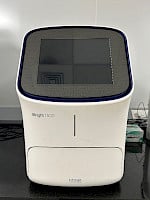
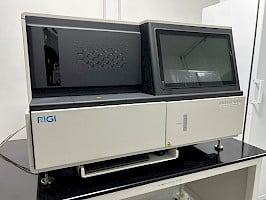
Specifications:
- Sequencing Technology: DNBSEQ™ (DNA Nanoball Sequencing)
- Read Modes Supported:
- SE50/SE100
- PE100/PE150
- Custom flexible modes
- Maximum Data Output: Up to 720 Gb per run
- Read Length: Up to 2 × 150 bp
- Run Time: 24–48 hours depending on configuration
- Number of Reads: Up to 1.4 billion reads per run
- Accuracy: ≥ 85% bases ≥ Q30
Software Integration:
Applications: WGS, WES, transcriptome, small RNA, metagenomics, targeted sequencing.
2.Oxford Nanopore GridION Sequencing System
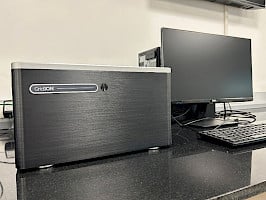
Specifications:
- Read Length: Up to megabases; limited only by DNA fragment size
- Data Output: >100 Gb per flow cell depending on library and run time
- Basecalling: Integrated high-performance GPU for real-time basecalling
- Input DNA/RNA: Native DNA, cDNA, or direct RNA
- Flow Cells: Supports FLO-MIN106D (R9.4.1), FLO-FLG001, and others
Applications: Whole genome sequencing (WGS) of humans, plants, animals, and microbes, Full-length transcriptome and RNA isoform sequencing, Real-time pathogen detection and outbreak surveillance.
IV. Bioinformatics and Data Analysis
To ensure actionable insights from your data, we provide:
- Custom Bioinformatics Pipelines – For genomics, transcriptomics, and metagenomics.
- Support for Data Interpretation – Statistical analysis, annotation, and visualization.
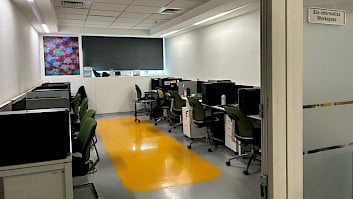

Our high-performance bioinformatics workstation is optimized to handle computationally intensive biological data analysis, including next-generation sequencing (NGS), proteomics, and genomics pipelines.
V. Protein Separation and Characterization:
GE ÄKTA Explorer 900 series
The GE ÄKTA Explorer 900 series, FPLC (Fast Protein Liquid Chromatography) – For protein purification, fractionation, and analysis under native or denatured conditions.
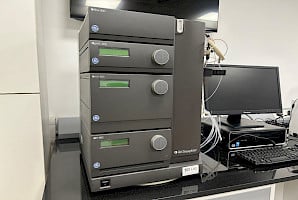
Specifications:
GE ÄKTA Explorer 900 series
pH/C-900: Real-time monitoring and control of pH and conductivity
UV-900: UV detector for protein detection at multiple wavelengths
P-900: High-precision pump for gradient formation
- Flow Rate Range: 0.001 – 100 mL/min
- Pressure Range: Up to 25 MPa (approx. 3625 psi)
- Detection Wavelengths: 254 nm and 280 nm
- Temperature Range: Ambient, with optional cooling options for column and sample
Software Integration: UNICORN control and analysis software
Applications: Purification of recombinant proteins, antibodies, enzymes, and other biomolecules, Gradient optimization and method development, Real-time monitoring of elution profiles (UV, pH, conductivity)
VI. High-Throughput Proteomics
Sciex TripleTOF 6600+ System with the Eksigent Micro LC EK425
The Sciex TripleTOF 6600+ System, combined with the Eksigent Micro LC EK425, delivers high-sensitivity, high-throughput performance for quantitative and discovery proteomics. This advanced platform is tailored for researchers demanding deep proteome coverage, accurate quantification, and reproducible results across complex biological samples.
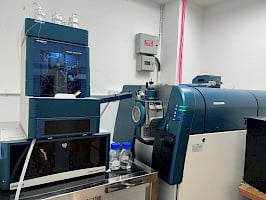
Specifications:
Triple TOF 6600+ Mass Spectrometer:
- Mass Range: Up to m/z 40,000
- Mass Accuracy: <2 ppm with external calibration
- Scan Speed: Up to 100 Hz (MS/MS mode)
- Dynamic Range: >5 orders of magnitude
- SWATH Acquisition: Enables data-independent acquisition (DIA) for reproducible label-free quantification
Eksigent Micro EK425 System:
- Flow Rate Range: 1–50 µL/min (nano to microflow)
- Pressure Range: Up to 10,000 psi
- Injection Volume: Precise handling of low-volume samples (up to 10 µL)
- Gradient Accuracy: Excellent reproducibility for high-throughput workflows
Software Integration: ProteinPilot, MarkerView, PeakView, SciexOS.
Applications: Identification, Qualitative and quantitative proteomics, PTM analysis, IDA and SWATH data acquisition.
Capabilities and Technologies of our Genomics and Proteomics Facility:
- Next-Generation Sequencing (NGS)
- Real-Time PCR (qPCR)
- Capillary Electrophoresis
- 2D-Gel Electrophoresis and Western Blotting
- Liquid Chromatography–Mass Spectrometry (LC-MS/MS)
- Protein quantification and characterization platforms
- Bioinformatics pipelines for genomics and proteomics data analysis
Location:
Room No. B110, B116 & B120 at CoEE
B-Block, 1st Floor,
Department of Life Sciences, SNS
Shiv Nadar IoE University,
Noida, Delhi-NCR
Contact Us:
Sushil Kumar Singh
Facility In-Charge
Email: [email protected]
